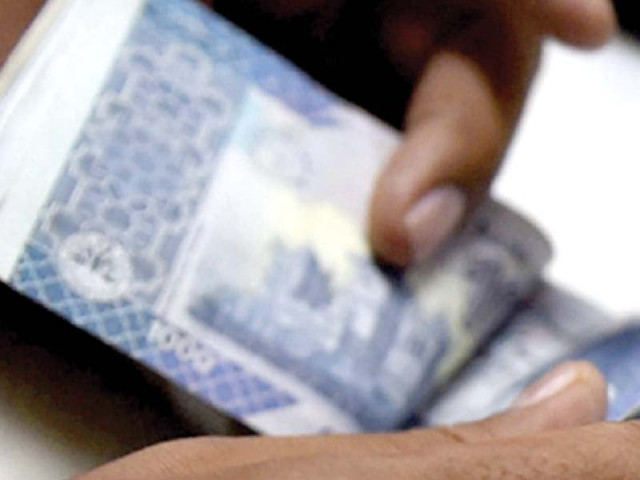Rupee hits one-year low at 166.87
Demand for foreign currency remains high in country

Pakistani currency hit a new one-year low at Rs166.87 against the US dollar in the inter-bank market on Wednesday, as demand for the foreign currency remained high compared to supply in the country.
Pakistan’s import payments were significantly higher compared to export earnings, “suggesting the trade deficit has remained high at over $3 billion in August as well,” Pak-Kuwait Investment Company Head of Research Samiullah Tariq said while talking to The Express Tribune.
The falling rupee is just Rs0.56 shy of the all-time low of Rs167.43 hit a year ago on August 27, 2020.
With a fresh drop of Rs0.49 on Wednesday, the rupee has lost 6% (or Rs9.44) since the start of current fiscal year on July 1, 2021, according to the State Bank of Pakistan’s (SBP) data.
The currency has maintained its downturn after touching a 22-month high of Rs152.27 in May 2021, losing a cumulative 9.59% (or Rs14.60) in the past three months.
The market had expected the rupee to gain strong support from a boost in the country’s foreign currency reserves to an all-time high of $20.4 billion on August 24 in the wake of receipt of $2.75 billion from the International Monetary Fund (IMF).
The inflows, which boosted the foreign currency reserves by 16%, failed to extend support to the weakening rupee.
“The government has adopted the policy of not using its borrowing to support the rupee,” Tariq said.
The current account deficit may once again swell to the dangerous level of $20 billion recorded in fiscal year 2018 “if the government supplies the borrowed money to the inter-bank market,” he said.
Accordingly, the government has decided to let the market-based, flexible rupee-dollar exchange rate mechanism determine the value of the rupee against the US dollar keeping in view the demand and supply of foreign currency in the inter-bank market.
The inter-bank market mostly meets demand for import payments through receipts of export earnings and workers’ remittances sent home by overseas Pakistanis.
“The real effective exchange rate (REER) - the country’s cost of external trade - has improved back to 98 points on the index in July after losing to over 102 points a couple of months ago, suggesting rupee is trading around fair values these days and there is left hardy any space to drop furthermore,” Tariq said.
The IMF has extended $2.75 billion to Pakistan under its new allocations for it member countries around the world to support them combat against Covid-19 challenges and improve their capacity to pay for imports and repay foreign debts.
Published in The Express Tribune, September 2nd, 2021.
Like Business on Facebook, follow @TribuneBiz on Twitter to stay informed and join in the conversation.



















COMMENTS
Comments are moderated and generally will be posted if they are on-topic and not abusive.
For more information, please see our Comments FAQ